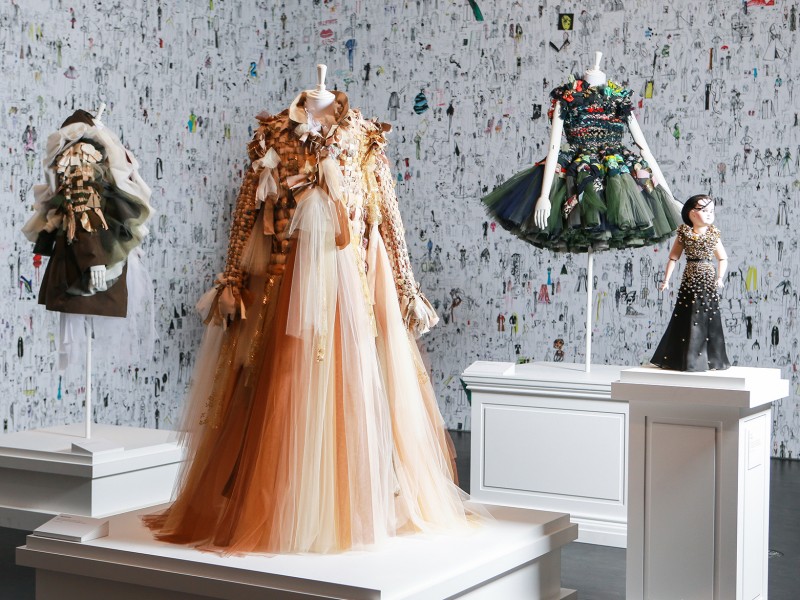When Robert Mapplethorpe died in Boston on the morning of 9 March 1989, he was 42. He had already attained a degree of notoriety in art circles and questions had been raised about the pornographic content in his art. His images contained explicit nudity, graphic records of homosexual acts and sadomasochistic scenes initially encountered on his journeys into the Manhattan underworld—before being meticulously recreated in his studio. Mapplethorpe was determined to be remembered as one of America’s greatest photographers. His death, due to complications from HIV/AIDS, was prolonged and painful, but provided him with ample opportunity to plan his legacy.
Mapplethorpe selected Patricia Morrisroe, a journalist and contributing editor to New York magazine, as his official biographer, instructing her as to which friends to interview and providing her with his own extensive oral memoirs. She created a frank, at times unflattering but very readable, picture of the artist. As a second strategy—almost a year before his death—he helped to establish the not-for-profit Robert Mapplethorpe Foundation which, in the words of its charter, set out “to protect his work, to advance his creative vision and to promote the causes he cared about”. Weeks before his death, Mapplethorpe added a second and important mandate—to support research into the nature of AIDS and HIV infection.
Following his death, circumstances conspired to radically challenge Mapplethorpe’s legacy. In life, he was largely known in photographic circles as a studio photographer who specialised in images of gay subculture. Posthumously, Mapplethorpe suddenly made international news headlines and became the subject of mass public demonstrations. Much of this had to do with an extensive exhibition of Mapplethorpe’s photographs, The Perfect Moment—a selection of 125 images that spanned twenty-five years of his art. Amongst his photographs of classical nudes, flower studies and celebrity portraits were images from Mapplethorpe’s XYZ portfolios that focused on homoerotic imagery, homosexual sadomasochism, nude portraits of Afro-American men and graphic representations of theatrical reenactments of sexual scenes that left little to the imagination. One photograph, Man in Polyester Suit (1980), focused on an enlarged penis protruding from the open fly of a suited man, while another photograph Jim and Tom, Sausalito (1977), shows two men clad in leathers with one urinating into the mouth of the other. Although many of these ‘sex pictures’ as Mapplethorpe called them, had been included in his retrospective at the Whitney Museum in New York in 1988, that was a single venue show on his home turf. The Perfect Moment was intended to showcase his art for all of America to see.
The Perfect Moment had been curated by Janet Kardon from the Institute of Contemporary Art in Philadelphia and opened as a touring show in Philadelphia in 1988, a few months before the artist’s death. Despite the explicit nature of the imagery, the first two venues—in the planned five museum tour—were met with critical acclaim and received well by the public. Which is to say that the exhibition was received quietly.
Disaster of sorts struck at the third venue, the Corcoran Gallery of Art in Washington DC, where its director, Christina Orr-Cahall, buckled to pressure from the conservative moral watchdog, The American Family Association, subsequently cancelling the exhibition only weeks before it was due to open. The American arts community were outraged and demonstrations were organised to protest against the Corcoran’s decision. At night Mapplethorpe’s images were projected on the museum’s façade, and by July 1989 the Washington Project for the Arts boldly stepped in and hosted the show which attracted nearly 50,000 visitors. By the time The Perfect Moment had reached the Contemporary Arts Center in Cincinnati, police moved in and closed the show—indicting the gallery director for exhibiting obscene materials and child pornography. A working class jury at the resulting proceedings—who had been chosen precisely for their lack of exposure to art or museums—finally dismissed all charges, following testimonies from a slew of art experts convincing them that Mapplethorpe was making something called art and was not a mere pornographer. The exhibition re-opened in Cincinnati and attracted a record crowd of over 80,000 people.
Mapplethorpe’s exhibition sparked one of the most intense episodes of the ‘culture wars’ in America. After destroying a copy of Mapplethorpe’s exhibition catalogue on the floor of Congress, the conservative Republican Senator Jesse Helms, introduced legislation that would stop the National Endowment for the Humanities from funding art that he regarded as obscene. This brought about a period of fear for publicly funded organisations and museums, casting a shadow on the arts in the public domain for many years to come.
In the meantime, the Mapplethorpe Foundation actively promoted the artist’s work, and in 1993 established the Robert Mapplethorpe Gallery at the Solomon R. Guggenheim Foundation—while the Getty Center, jointly with the Los Angeles County Museum of Art, acquired his archive with the assistance of the Mapplethorpe Foundation. Despite subsequent litigation and police raids, Mapplethorpe’s photographs continued to be exhibited and the artist became a cause célèbre in the American culture wars. While his posthumous reputation as an ‘artist’ guaranteed his place in the history of late 20th century visual culture.
More than a quarter of a century after the artist’s death, how do we remember Robert Mapplethorpe? He was an artist who pushed the boundaries of photography, not only by declaring his freedom in choice of subject matter, but also in his technique. His exquisitely stylised explorations of form, sexuality, race and gender have become some of the most iconic and memorable works of the 1970s and 1980s, while capturing the zeitgeist of his epoch. Mapplethorpe’s photographs were obsessively planned and deliberate, with usually uncluttered compositions posed against redacted backdrops with meticulously controlled lighting. In his art, Mapplethorpe frequently combined a classical sensibility with striking content, destroying any hint of the ephemeral or accidental. There is something timeless and eternal in his art, seeking to give the beloved male nude—a subject that was not popular in studio photography in his day—the quality of timelessness that we often associate with the statues of the ancient Greeks.
For more visit www.mapplethorpe.org
Related Features
-
198
-
-
-

